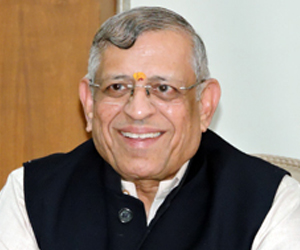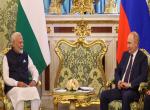Its explicit intent is to provide for the deprived and disturbed through direct fiscal spend from the budget.
The Modi stimulus package is in three parts — direct government spend, bank credit, and rate cut and lending by RBI to banks. Modi’s detractors damn the package saying the bank credit part of the package is large and the government share is insignificant. But their criticism is founded on poor understanding of the Indian financial model and the fiscal relationship between state-owned banks and the government. Comparing the Modi package with those of the Group of Seven (G7) nations is also irrational as the Indian banking model differs vastly from G7’s. Unless this vast difference is understood, the logic behind the Modi package math cannot be appreciated.
No bank lending in G7, only note printing
The US, which sets the philosophy and rules for global finance, has but one insignificant state-owned bank. The total US bank assets is $20.4 trillion. The state owned bank’s share is less than 0.03 per cent. In the UK, of the total bank assets of $10 trillion, the share of the only one state-owned — but not state-run — bank is 8.6 per cent. In France, of the total bank assets amounting to $8.3 trillion, the share of a state-owned bank is just 2.6 per cent. In Germany, which has a unique financial model, bank assets total $9.16 trillion, of which the public sector bank’s share is 26 per cent. Japan’s bank assets total $17.42 trillion, of which state owned banks’ share is just 8 per cent. Banks assets of the entire EU is $47.6 trillion. And G7’s total banks assets is $86.4 trillion. The combined stock market capitalisation of G7 countries is close $60 trillion. Despite the huge bank funds and stock market access, G7 nations do not borrow a farthing from the banks or stock markets; they instead resort to printing notes for the Covid package. That G7 nations do not borrow from banks for their package or access stock markets, but print notes, is hidden in the Indian discourse on the Modi package.
Covid-19 bank credits are equally government risk
India is a total contrast. In India, almost half the savings go into bank deposits and 70 per cent of it into state owned banks. And only 2.5 per cent of financial savings get into stocks, which is significant for foreign financial entities investing in India. The main driver of the Indian financial system is the banks, more specifically public sector banks. Public sector banks have to finance the Central government, state governments and also Indian business. Borrowings by Central and state governments have been crowding out Indian business from banks, forcing them to borrow from abroad through external commercial borrowings —which is a huge risk to the economy. For the current year, state and Central government loan demand on banks will be 60 per cent more than the deposits they added. There is no way the two governments could borrow more from banks. That is why the Modi government has to limit its borrowing for direct Covid-19 spend on its account.
A less known fact is more relevant now. Global rating agencies consider the credit risk of Indian public sector banks as contingent liability in their sovereign rating of the Indian government. A Moody’s report said in 2016 that unprovided bad loans cause contingent liabilities to crystallise on the government’s balance sheet. This virtually erases the dividing line between government guaranteed credit in the package and credit not guaranteed by government. The entire bank credit part of the Modi package, whether guaranteed or not by government, is sovereign risk. The government’s direct spend and bank credit, a sovereign risk, constitute 62 per cent of the Modi package — the RBI liquidity window constituting the remaining 38 per cent.
Twin purpose of Modi package: Intent and aim
The Modi package has a logical intent and an equally clear aim. Its explicit intent is to provide for the deprived and disturbed through direct fiscal spend from the budget. His Covid-19 relief target seems clearly defined and ordered - the distant poor first, the middle group next, and then the rest. And the aim is to restart the economy with the relief measures itself. This twin purpose is self evident from the package.
Modi promised on March 26 to double the entitlement of grains to 80 crore poor people for the next three months. In April itself, 36 states had lifted 67.65 lakh tonnes of food grains for delivery to the beneficiaries. He promised free gas cylinders for 8 crore people for the next three months. Out of 509 lakh requests booked, 482 lakh cylinders have been already delivered. Through the 38 crore Pradhan Mantri Jan Dhan Yojana (PMJDY) bank accounts, the Modi government reached Rs 16,394 crore to farmers, Rs 10,295 crore to women, Rs 1,405 crore to the old, widowed and disabled and Rs 3,492 crore to 3.5 crore construction workers registered with the government, who constitute most of the migrant labour.
The March 26 announcement also offered those earning less than Rs 15,000 per month in MSMEs (with less than 100 employees) 25 per cent of their wages for three months; to organised sector employees a non-refundable advance equal to 75 per cent of their wages for three months; and to the MGNREGA poor a rise of Rs 20 in the daily pay out. The government could deliver all the relief without leakage because of the architecture it had created through PMJDY and Aadhaar linkage, which enabled the beneficiary to take cash from any ATM or other authorised person through use of biometrics. Imagine India being struck by corona without the 38 crore bank accounts of the poor and Aadhaar!
After March 26, Modi made the nation wait with bated breath on his next Covid-19 package. Till then he was talking about everything except the package. On May 12, after the expectation heightened, came his dramatic announcement increasing the package to Rs 20 lakh crore — most of it to restart the economy. The excitement he generated was kept alive for the next five days by Finance Minister Nirmala Sitharaman mixing reliefs with reforms. The five-day show was also well rehearsed.
It had Rs 3 lakh crore collateral free loan, Rs 50,000 crore equity and Rs 20,000 crore subordinated debt and debt relief of Rs 75,000 crore to NBFCs, and Rs 6,500 crore loans for street vendors and Mudra loanees — all for MSMEs — totalling to Rs 5 lakh crore. Food for migrant workers, provision for fishermen, animal husbandry, micro food processing, amounting to Rs 49,000 crore and another Rs 40,000 crore for MGNREGA, all for the poor, adding up to Rs 89,000 crore. For the farming class, Rs 330 lakh as agriculture loan and agri infra. And Rs 50,000 crore tax deduction at source deferment, Rs 9,550 crore PF payment by government and Rs 70,000 crore housing loan, for the middle class — Rs 1,29,550 crore. Even as his detractors keep issuing statements that he had not spent from the government’s pocket — where there is nothing really to spend from — but only from the banks, Modi has actually delivered relief to his target audience by naming each of them and calling their attention.
The MSMEs do not bother whether credit is guaranteed or not, as long as it comes. The real challenge for the government is to ensure that the promised credit is delivered. Modi has been strategic in conceptualising and communicating his package. Yechury says it is all for the rich, when there is nothing at all for the rich! Even as Chidambaram says it is an empty sheet, Modi has actually delivered relief to the most.
Not the final word on stimulus package
Now, a couple of good news. Women beneficiaries into whose account over Rs 10,000 crore had been delivered, have withdrawn less than half of it, indicating there is no extreme deprivation due to lockdown. Another good news is the PMJDY accounts have shown surge in deposits during lockdown. Between April 1 and 7, deposits went up by Rs 8,000 crore. And by May 15, it further rose by Rs 8,000 crore — a total of Rs 16,000 crore in 45 days of lockdown. In comparison, during the whole of 2019, PMJDY savings had risen only by Rs 26,000 crore. In a way it is bad news — but not that bad — that they are saving and not spending and to that extent there is no demand.
Finally, will the Modi package so far be the final one? Unlikely. The Covid-19 challenge continues. No one knows how much further damage it can cause. That is why Modi seems to have kept the powder dry for doing as a last resort what the G7 is doing. A hint has come from the RBI governor that he has not taken a call as yet on monetisation of deficit -- namely government borrowing from RBI. Right strategy indeed.











Post new comment